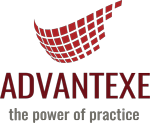I was a little anxious to present my ideas to the CFO and VP, of Finance for an up-and-coming medical device company as a review of an intensive business acumen program I am running for them in a few weeks.
weeks.
I was thrilled to hear their positive feedback and best of all they were very complimentary of one section they wanted me to create for them on the concept of operating leverage. The review went so well that I figured I’d turn the content into a nice, practical blog that first defines operating leverage and then provides 10 things everyday managers can do to drive it.
What is operating leverage?
Operating leverage is a financial metric that measures the extent to which a company's operating income can increase due to an increase in revenues (also known as “sales”). Operating leverage reflects the proportion of fixed costs relative to variable costs in a company’s cost structure. When a company has high operating leverage, it means that it has a larger proportion of fixed costs relative to variable costs. This setup can lead to a larger impact on profits when sales volume changes.
How Operating Leverage Works
High Operating Leverage: Companies with high operating leverage have higher fixed costs and lower variable costs. As sales increase, more of each additional sale contributes directly to profit because the fixed costs are already covered. However, if sales drop, profits can decline sharply because those fixed costs still need to be paid.
Low Operating Leverage: Companies with low operating leverage have higher variable costs compared to fixed costs. Their profit margins may not increase as much with additional sales because more of each sale goes toward covering variable costs. However, in a downturn, their profits tend to be more stable since they have fewer fixed expenses.
10 Things Managers Can Do to Drive Operating Leverage
- Enhance Sales and Marketing Efficiency: Shift focus to high-ROI marketing channels, use data to target customer segments more effectively, and implement cross-selling and upselling strategies.
- Streamline Processes: Simplify or eliminate unnecessary steps in operations to save time and reduce costs. Lean management techniques like Six Sigma or Kaizen can help minimize waste.
- Expand Capacity Utilization: Maximize the use of current resources like facilities, equipment, and staff, reducing the cost per unit by spreading fixed costs over a larger output.
- Invest in Employee Training and Development: Skilled employees tend to be more productive, making it possible to achieve more with fewer resources and reduce turnover costs.
- Negotiate Better Terms with Suppliers: Strengthen relationships with suppliers to gain discounts or longer payment terms, reducing the cost of goods sold.
- Increase Automation: Implement technology to automate repetitive tasks, reducing labor costs and improving efficiency. Examples include using software for customer service, accounting, or inventory management.
- Increase Value Proposition and Prices: Introduce premium products or services, enhance brand value, or differentiate offerings to justify higher prices, thereby improving margins.
- Outsource Non-Core Activities: Identify functions that could be handled more cost-effectively by third-party providers, allowing focus on core competencies while reducing costs.
- Deploy a Scalable Business Model: Create processes and systems that allow the business to grow without a proportionate increase in costs, such as digital products or subscription-based services.
- Implement Cost-Effective Energy Solutions: Reduce utility expenses by investing in energy-efficient equipment, adopting renewable energy sources, or optimizing energy use in facilities.
In summary, Operating Leverage is going to become a more important metric in 2025 and beyond. This list provides a roadmap for all managers to think more strategically about their roles and the decision you are making to achieve results.




